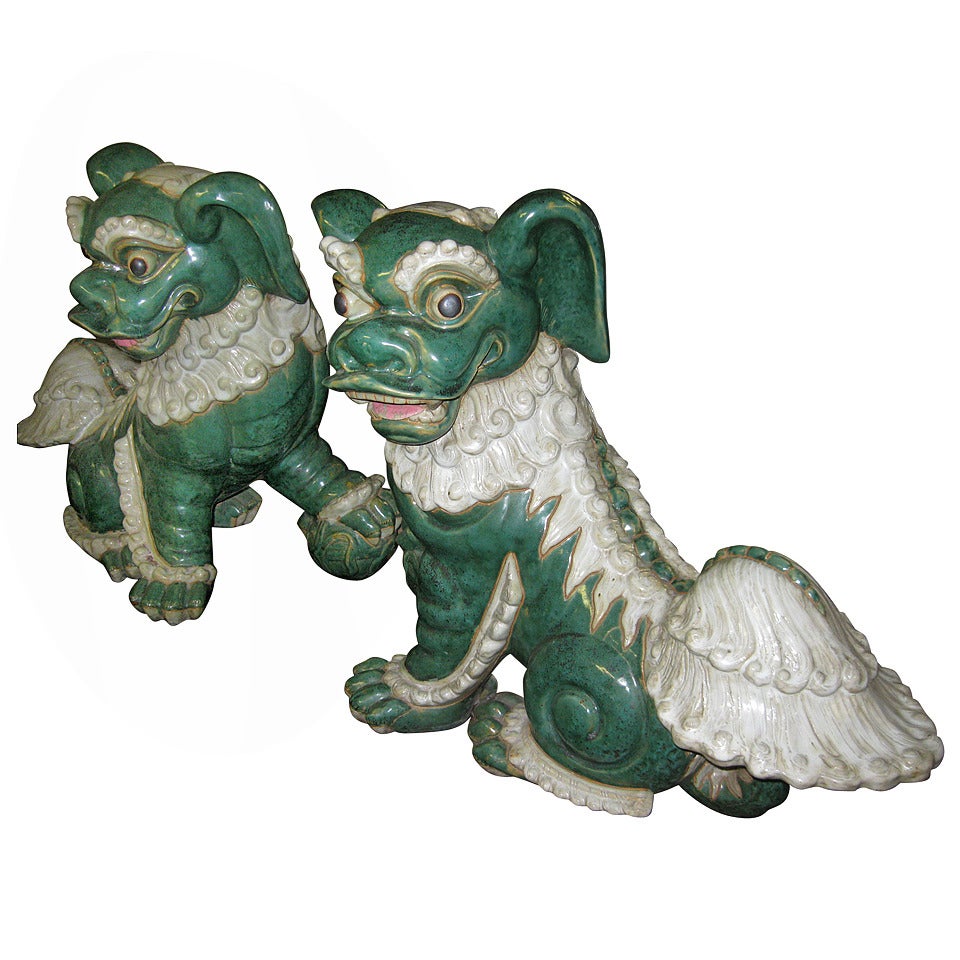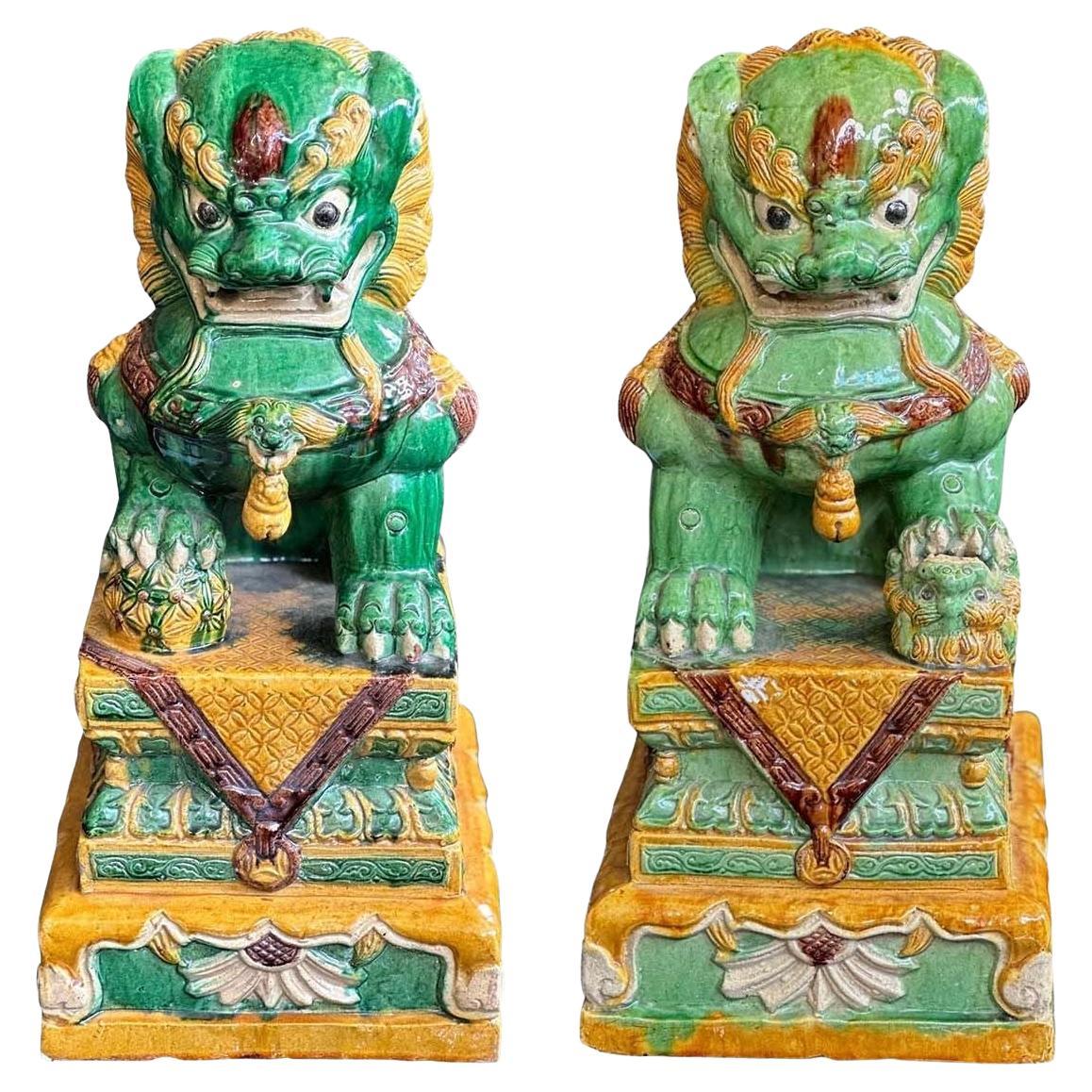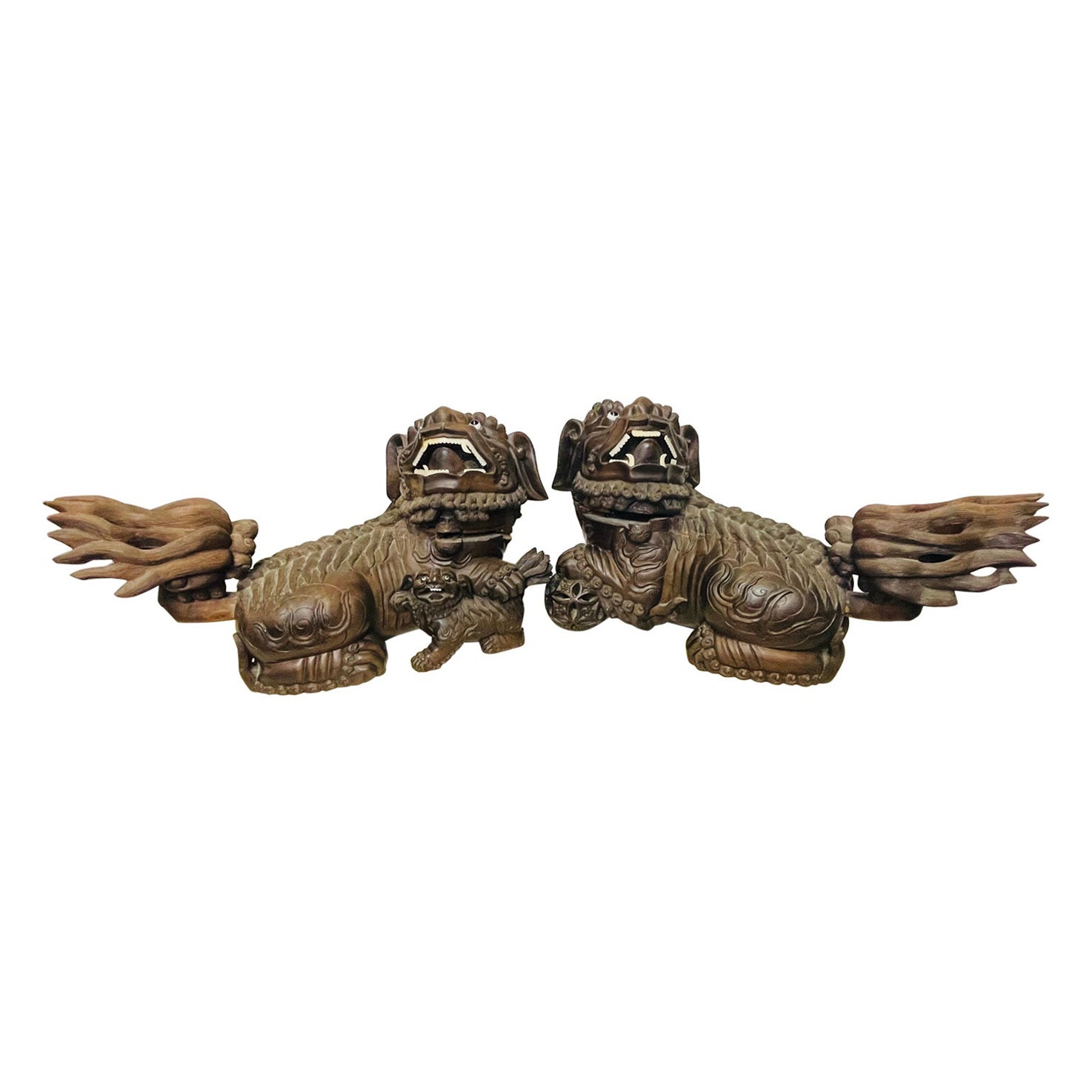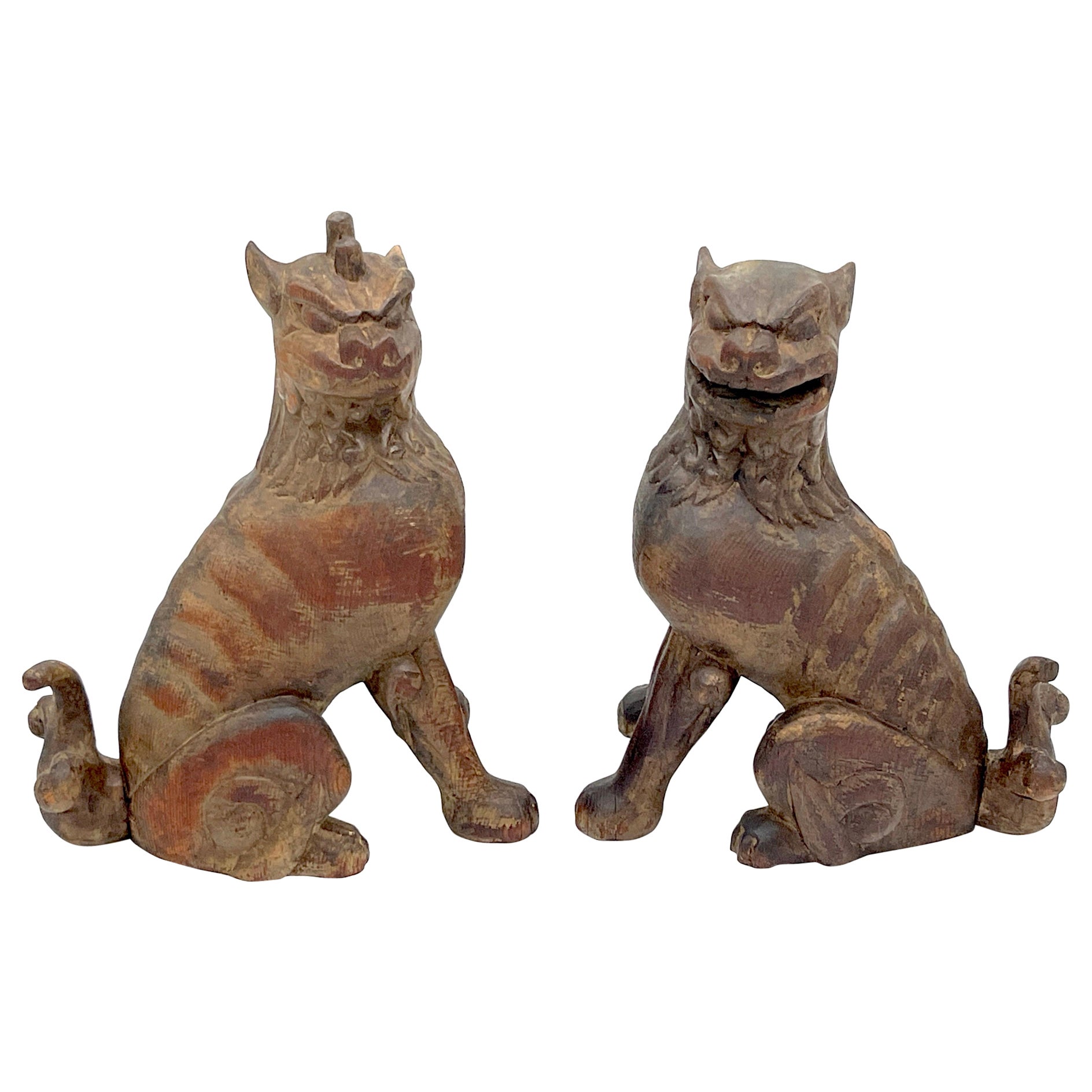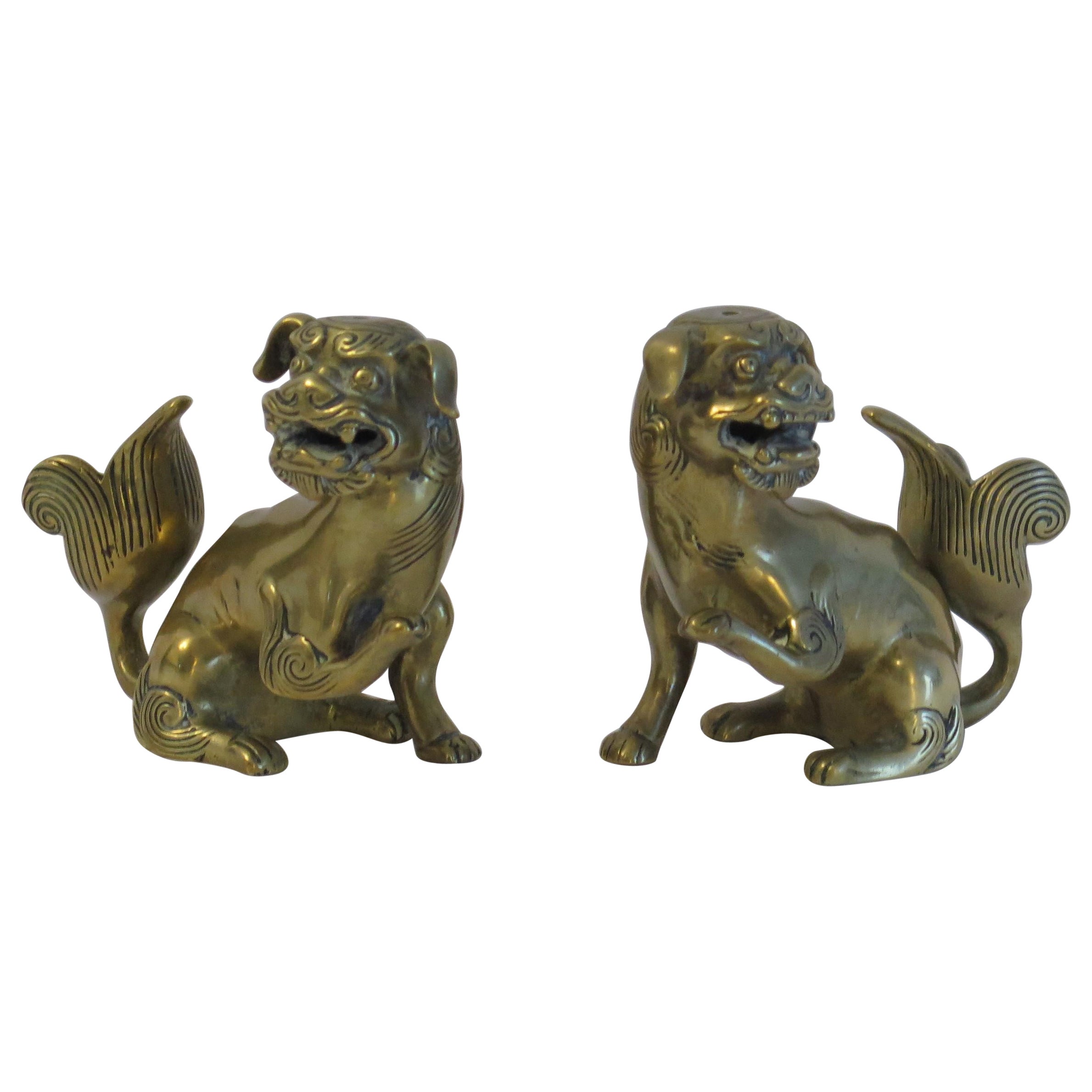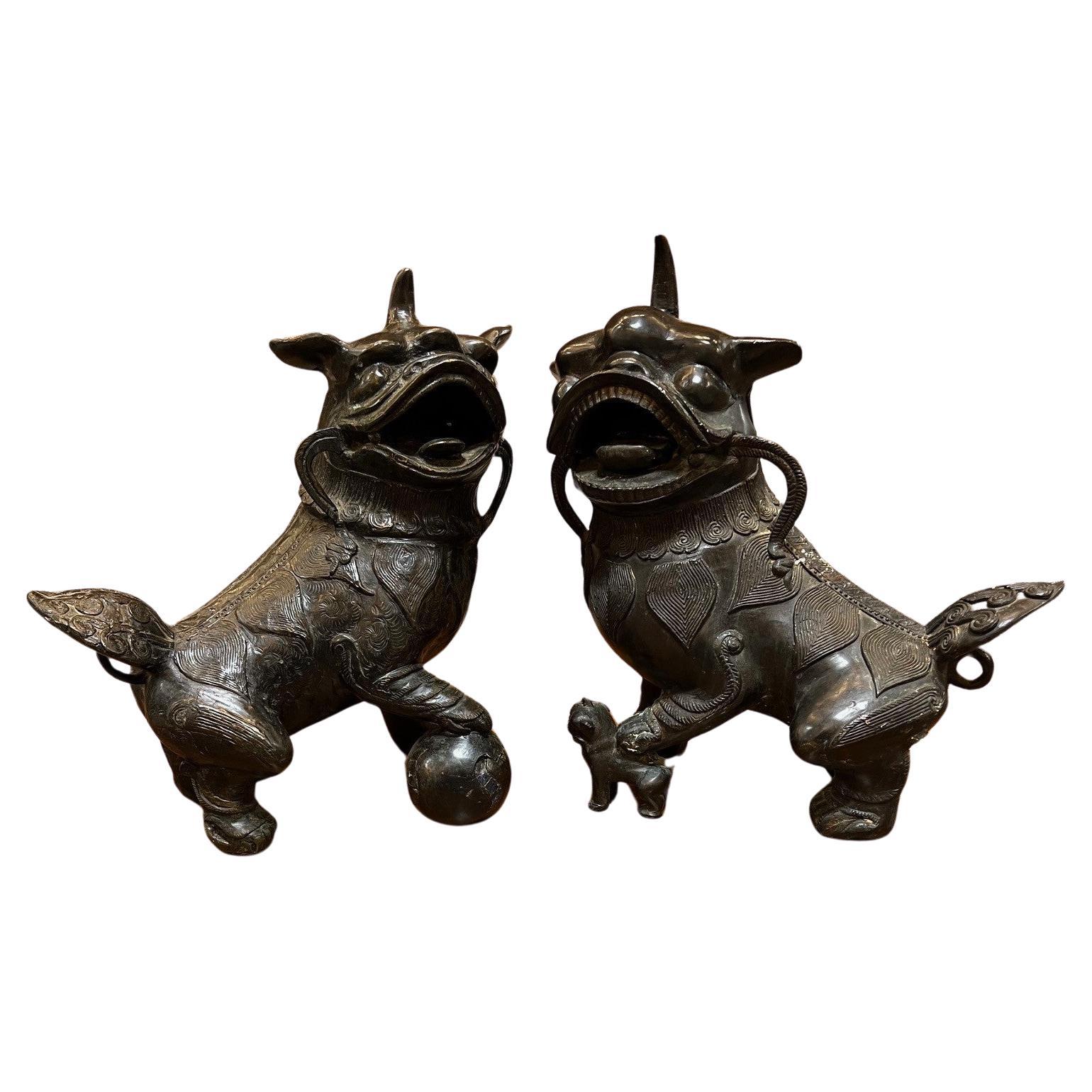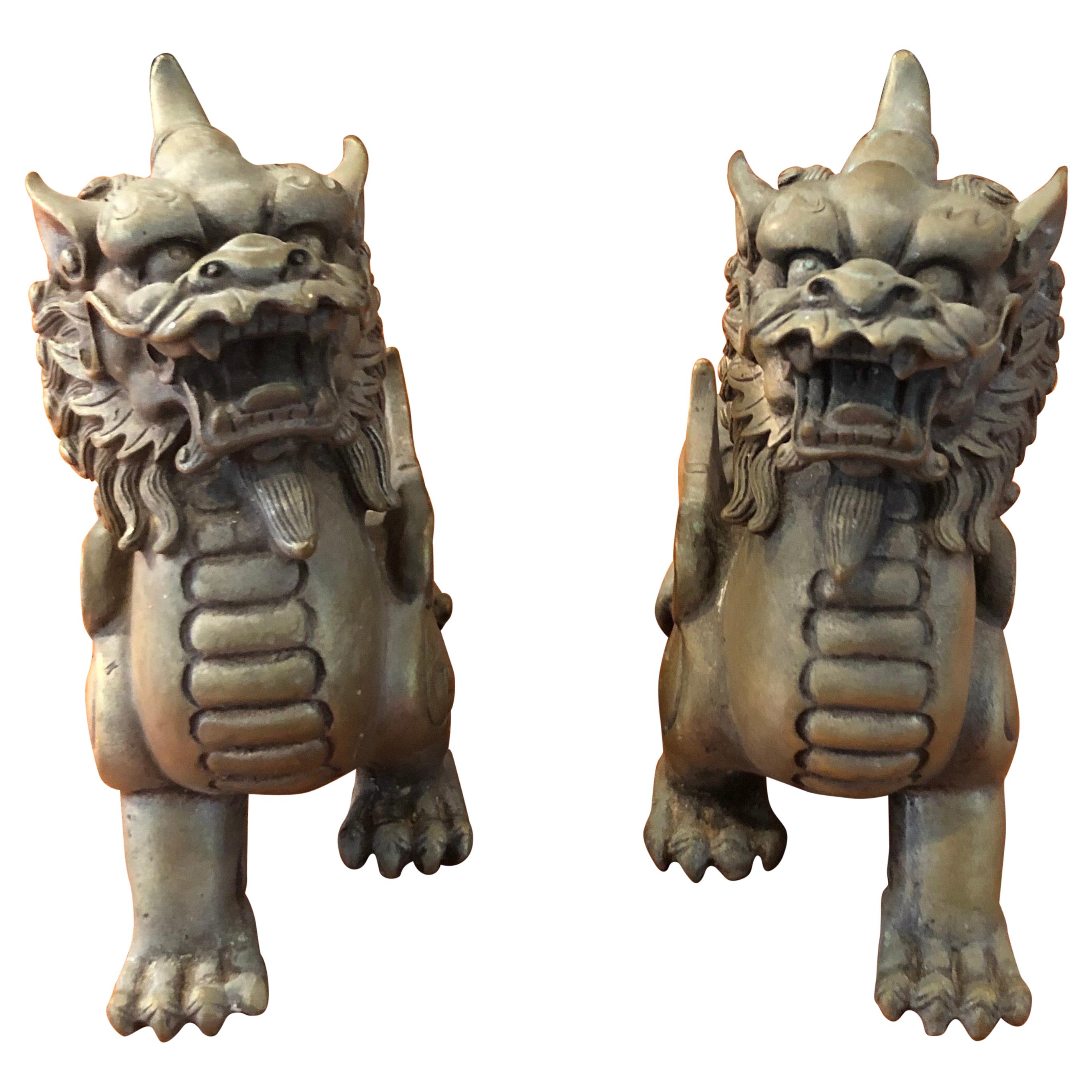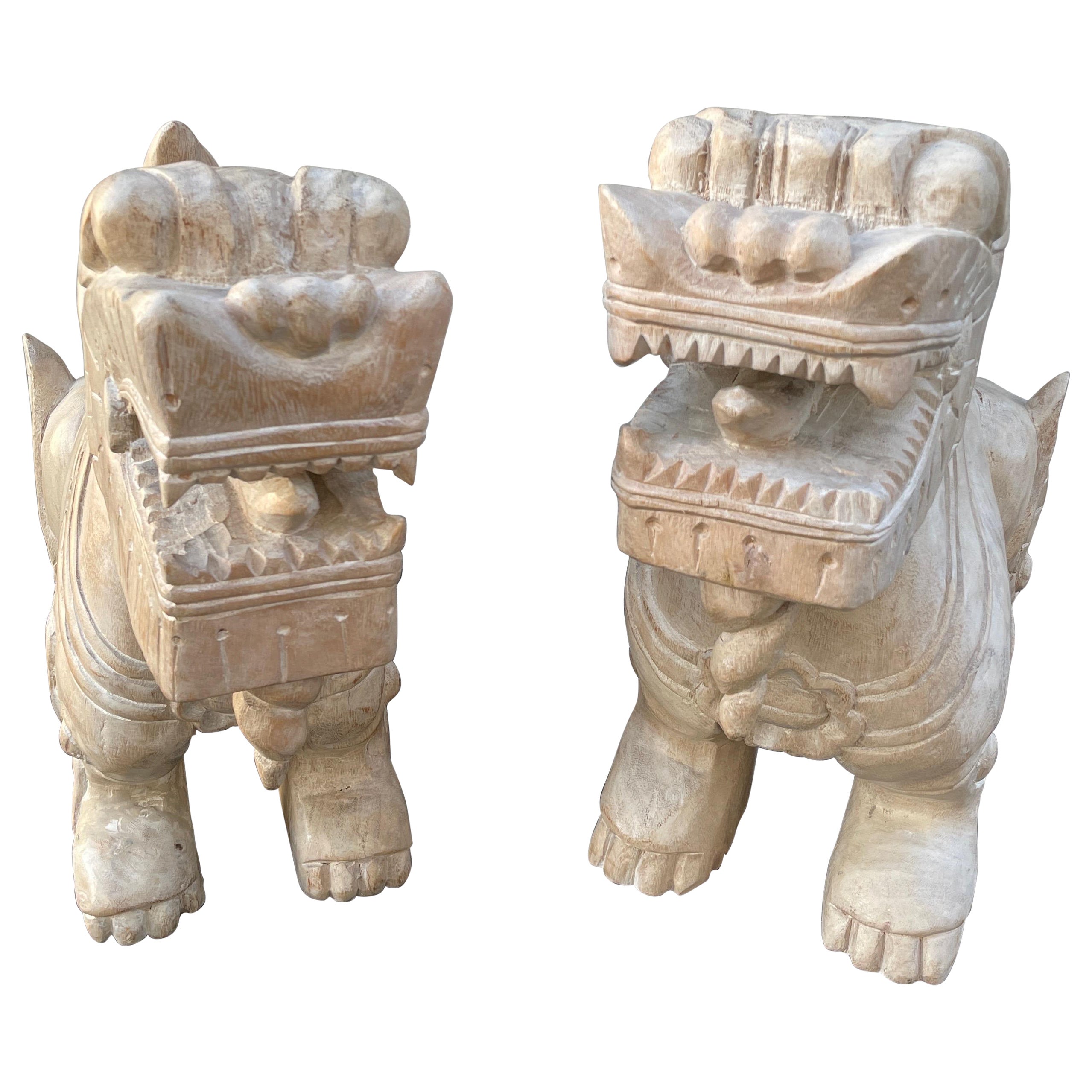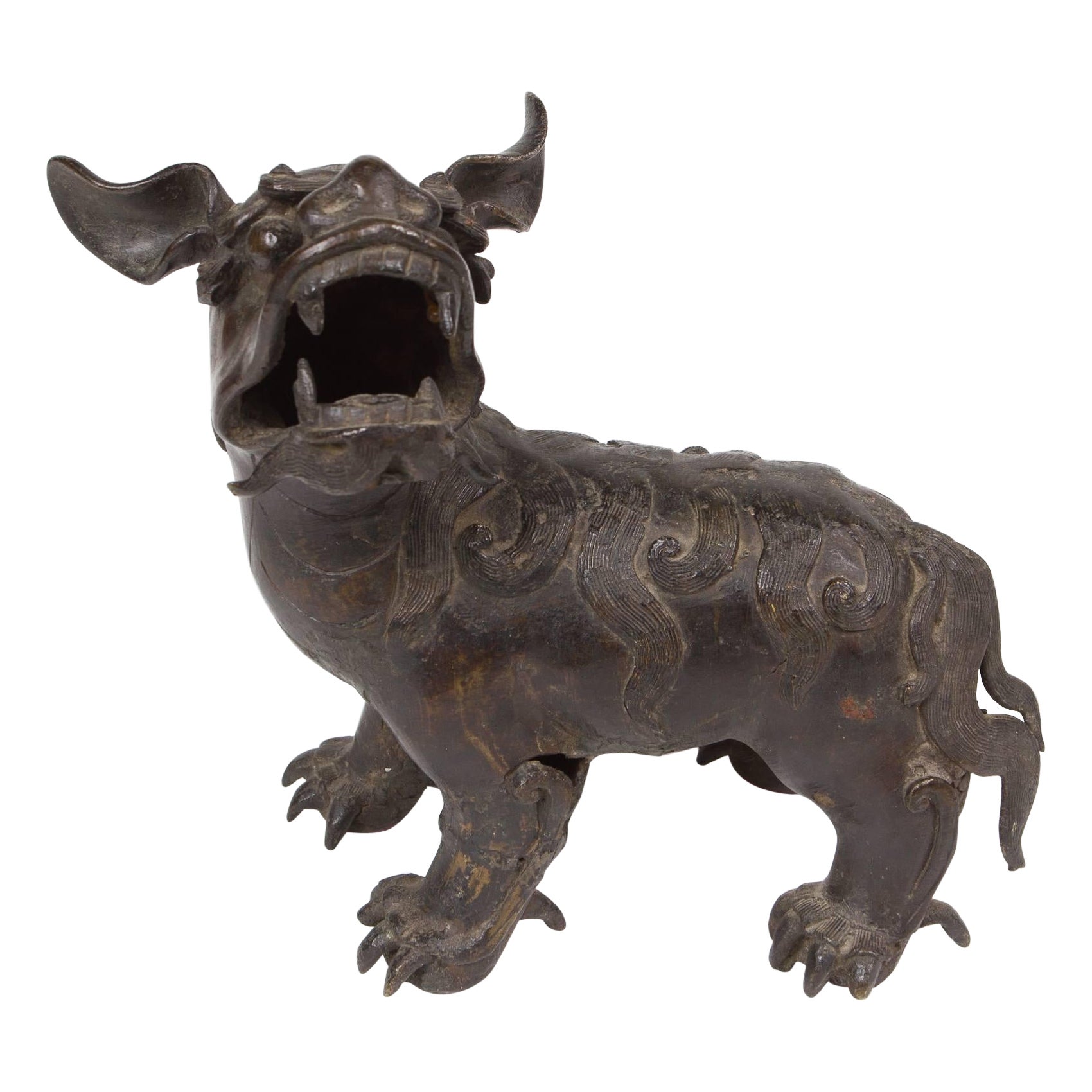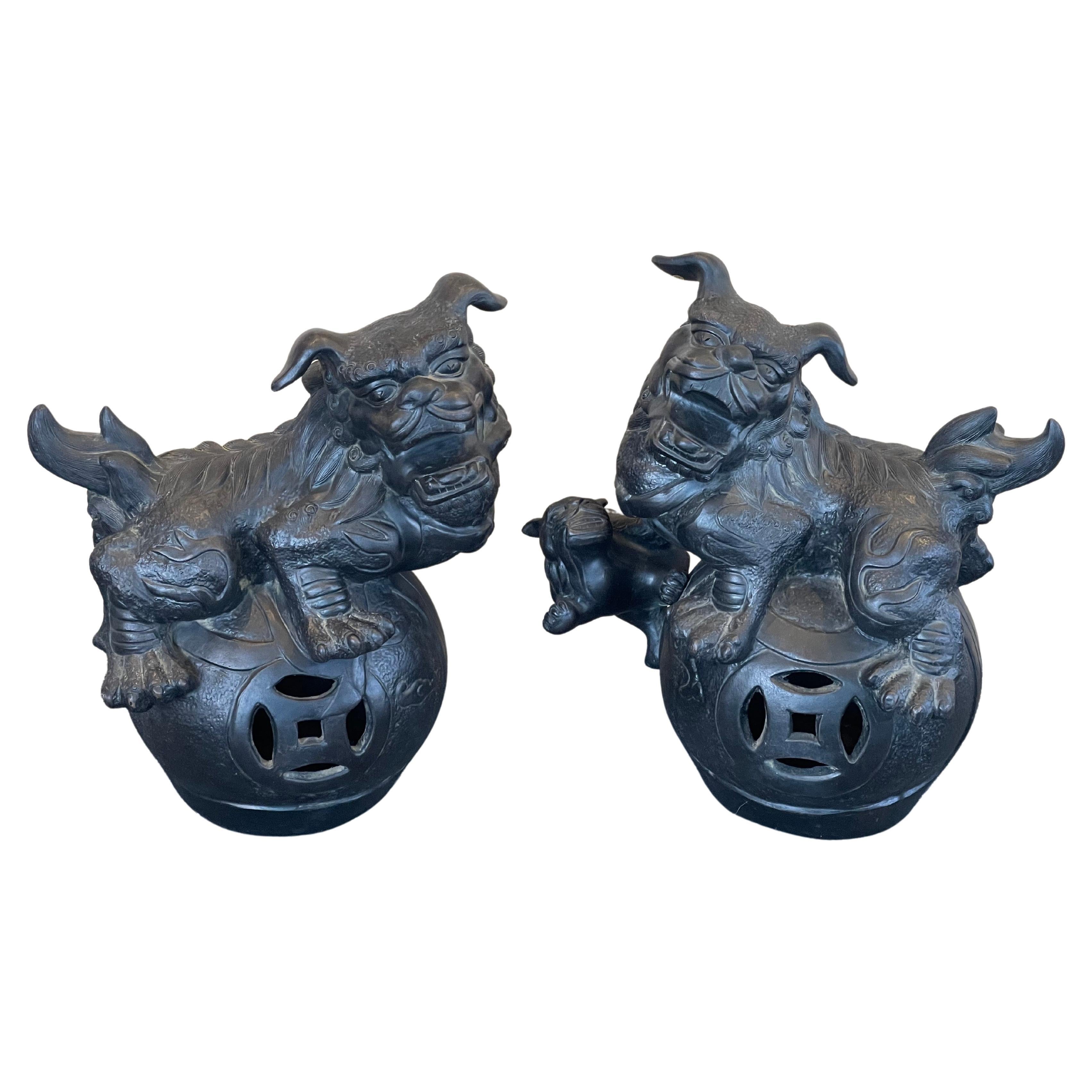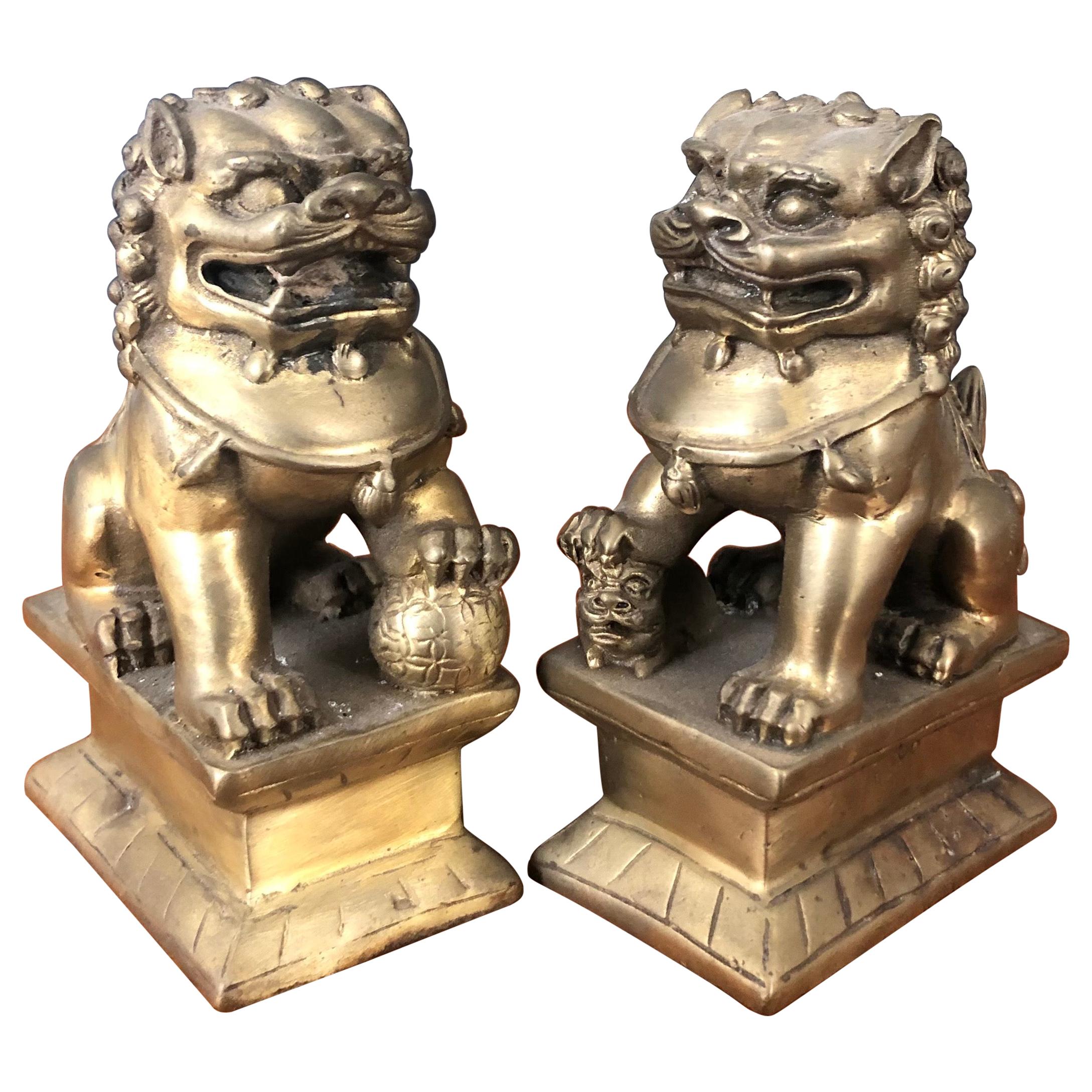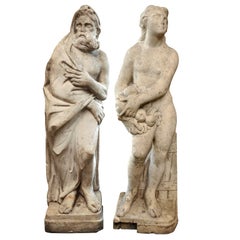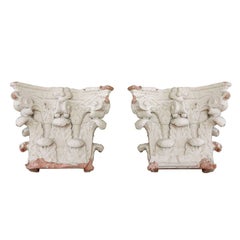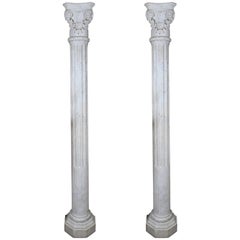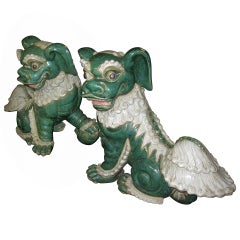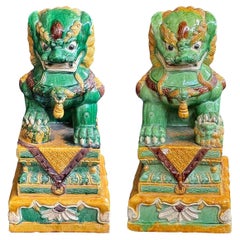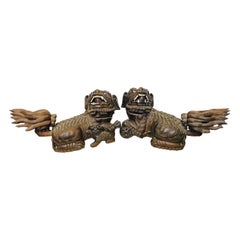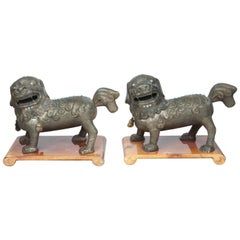
Pair of Matching 19th Century Foo Dogs
View Similar Items
Want more images or videos?
Request additional images or videos from the seller
1 of 8
Pair of Matching 19th Century Foo Dogs
$2,180List Priceper set
About the Item
- Dimensions:Height: 8 in (20.32 cm)Width: 10 in (25.4 cm)Length: 8 in (20.32 cm)
- Sold As:Set of 2
- Materials and Techniques:
- Place of Origin:
- Period:
- Date of Manufacture:Unknown
- Condition:Wear consistent with age and use.
- Seller Location:Los Angeles, CA
- Reference Number:Seller: H&G CON - FRANCESCA1stDibs: f88121604294592893fs
About the Seller
5.0
Vetted Professional Seller
Every seller passes strict standards for authenticity and reliability
Established in 1980
1stDibs seller since 2009
259 sales on 1stDibs
Typical response time: 1 hour
Authenticity Guarantee
In the unlikely event there’s an issue with an item’s authenticity, contact us within 1 year for a full refund. DetailsMoney-Back Guarantee
If your item is not as described, is damaged in transit, or does not arrive, contact us within 7 days for a full refund. Details24-Hour Cancellation
You have a 24-hour grace period in which to reconsider your purchase, with no questions asked.Vetted Professional Sellers
Our world-class sellers must adhere to strict standards for service and quality, maintaining the integrity of our listings.Price-Match Guarantee
If you find that a seller listed the same item for a lower price elsewhere, we’ll match it.Trusted Global Delivery
Our best-in-class carrier network provides specialized shipping options worldwide, including custom delivery.More From This Seller
View AllPair of Vintage Gold-Plated Bookends Rams Heads by Jaru
By Jaru
Located in Los Angeles, CA
Pair of Vintage Large Solid 18KT Gold Plated Ceramic Rams Head Sculptures, Bookends by Jaru, Hollywood Regency Style
Category
Late 20th Century American Sculptures and Carvings
Materials
Gold
Pair 19th Century of Marble Statues
Located in Los Angeles, CA
'Summer & Winter" - Male and Female Carved Marble Statues
Category
Antique 19th Century Unknown Statues
Materials
Marble
Pair of Plaster Architectural Capitals, 19th Century
Located in Los Angeles, CA
Pair of plaster architectural capitals.
Category
Antique 19th Century Unknown Architectural Elements
Materials
Clay, Plaster
Pair of Early 19th Century Carved Marble Columns
Located in Los Angeles, CA
Pair of extraordinary early 19th century carved marble columns, beautifully proportioned and intricately carved. Each column is in four pieces - base, column, disc and capital.
Category
Antique Early 19th Century Unknown Pedestals and Columns
Materials
Marble, Alabaster
$15,024 Sale Price / set
20% Off
Pair of Large 19th Century French Granite Urns
Located in Los Angeles, CA
Gorgeous pair of large scale granite urns. Measure approximate 21.5 height x 16 width x 16 depth.
Almost 10 inch opening at top.
Have been used as planters.
The body has Classic...
Category
Antique 18th Century Italian Neoclassical Urns
Materials
Granite
$8,160 Sale Price / set
20% Off
Pair of 19th Century Weathered Italian Seven Lights Candelabra
Located in Los Angeles, CA
Pair of 19th century Seven Lights Weathered Italian Candelabras in Amazing Condition
Category
Antique Early 19th Century Italian Rococo Revival Candelabras
Materials
Metal
You May Also Like
Late 19th century Pair of Glazed Porcelain Foo Dogs
Located in Savannah, GA
Extraordinary pair of fine glazed porcelain Foo dogs came to us out of an estate here in Savannah, Georgia, belonging to an old general that long ago brought them from Thailand. Used...
Category
Antique 1890s Chinese Qing Sculptures and Carvings
Materials
Porcelain
$27,500 / set
Pair of Late 19th Century Chinese Porcelain Foo Dogs
Located in Los Angeles, CA
Pair of Chinese porcelain male and female foo dogs. The male foo dog seems to have a ball on his foot while the female has a baby foo dog on hers. Made in...
Category
Antique Late 19th Century Chinese Sculptures and Carvings
Materials
Porcelain
Pair of 18th/19th Century Solid Teak Foo Dogs, Opposing, Statuary
Located in Manhasset, NY
Pair of 19th century / 1930s solid teak foo dogs, statuary.
A pair of finely carved from one sold piece of wood ancient opposing foo dogs. The dogs have uniquely expressive faces ...
Category
Mid-20th Century Chinese Chinese Export Sculptures and Carvings
Materials
Wood
Pair of 19th C. Tibetan Carved Wood & Polychromed Foo/ Guardian /Temple Dogs
Located in West Palm Beach, FL
A unique and enchanting pair of 19th Century Tibetan carved wood & polychromed foo/guardian/temple dogs. These mythical Buddhist temple dogs, also known as "foo dogs" or "lion dogs,"...
Category
Antique 19th Century Tibetan Tibetan Sculptures and Carvings
Materials
Wood
Antique PAIR of Chinese Bronze Foo Dogs good detail, Qing early 19th Century
Located in Lincoln, Lincolnshire
These are a very good PAIR of antique Chinese foo or lion dog sculptures, sometimes called temple lions, made of a brass-bronze metal alloy, with excellent detail, dating to the early 19th century, Qing period or possibly earlier back to the 18th century.
They are a male and female pair, the male with the slightly larger head. These pieces are very well cast with good detail and wear, showing a very good depth of colour. Both dogs have a small hole on the top of the head for incense to be placed.
Each piece weighs about 700gm unpacked
Overall a lovely pair of antique Chinese Foo Dogs...
Category
Antique 19th Century Chinese Qing Sculptures and Carvings
Materials
Bronze, Metal, Brass
$1,940 Sale Price / set
75% Off
Mid 20th Century Bronze Pair of Foo Dogs
Located in Stamford, CT
This is a nice pair of bronze Foo Dogs with a male and female with baby. They would look great in a garden or entrance to your home or garden. Foo Dogs also known as Guardian Lions s...
Category
Mid-20th Century Sculptures and Carvings
Materials
Bronze
$3,250 / set
